
Poems of the Southwest Corridor Path
Fun facts about the Poems of the Southwest Corridor path
As you walk from the Back Bay Station to the Copley Mall, you may notice some stone markers with words on them. No this isn't a graveyard, and these aren't a monument to soldiers. These are the poems and stories of Southwest Corridor Path.
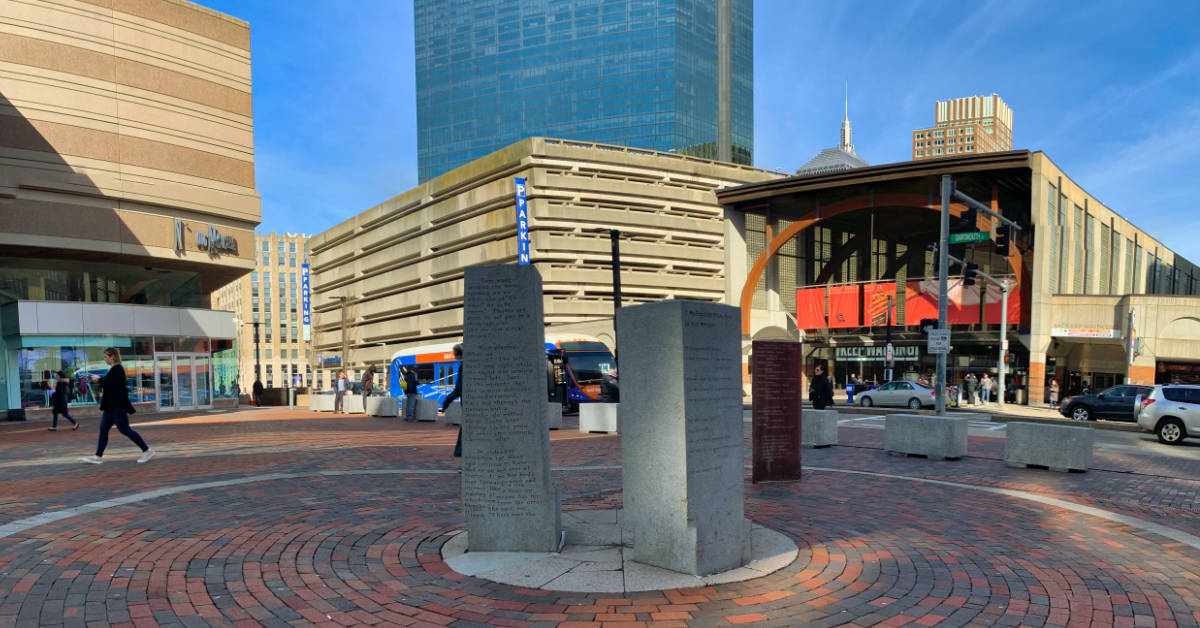
Five Things
- There are 18 poems and stories along with the 4.1 mile-long parks Southwest Corridor Path. The trail begins at the south entrance of the Back Bay station and ends at the Forest Hills T-station.
- The poems and stores were selected by community groups that selected the best ones for that area. Winners not only got their work engraved in stone but they also were given $1,000.
- The stones were put up in the early days of October in 1987, (There doesn't appear to be an official ceremony.)
- Orginally Funded by the Department of Transportation's Urban Mass Transportation Administration ( now called the Federal Transit Administration) as part of the Arts in Transit - The Southwest Corridor. (Comrehensive pubic art program manages by UrbanArts, Inc. for the MBTA.)
- The poem "If My Boundary Stops Here" was written by Ruth Whitman. She wrote this poem as she imagined the journey of Tamsen Donner (Donner Party) to California in 1846. The Donner party attempted to travel to California but ended up snowed in the for six months in the Sierra Nevada.
If My Boundary Stops Here
Poem By Ruth Whitman
If my boundary stops here
I have daughters to draw new maps on the world.
They will draw the lines of my face.
They will draw with my gestures my voice.
They will speak my words thinking they have invented them.
They will invent them.
They will invent me.
I will be planted again and again.
I will wake in the eyes of their children???s children.
They will speak my words.
Counterpoint by Jane Barnes
This is part of the "Counterpoint" story on several of the stones:
Tom and Kate were walking home and Kate, the more responsible one, was scowling Tom for not having paid their rent on time. They argued walking down First Street going up the stairs to their apartment building and inside while they took off their coats.
"But Karie," he said, "I wanted to make sure it had cleared first."
"But you had four clear business days, Tom count them!"
Kate flung her coat on a hook in the vestibule and went to the piano. She opened the music to Bach's First Interception which she was working on. She began to plan the opening as she said, "And anyway, that'll be the second time we been a few days late. It's embarrassing."
Tom was walking around the living room turning on the lights while she played. "To who?" he said. "The super? The accounts are done by some old guy in a skyscraper. It's not like we rent from a real person."
PermalinkMassachusetts Enters the Union
Massachusetts adopt the Constitution on this day in 1788
It was on this date in 1788 that Massachusetts officially ratified the Constitution of the United States and became part of the Union.
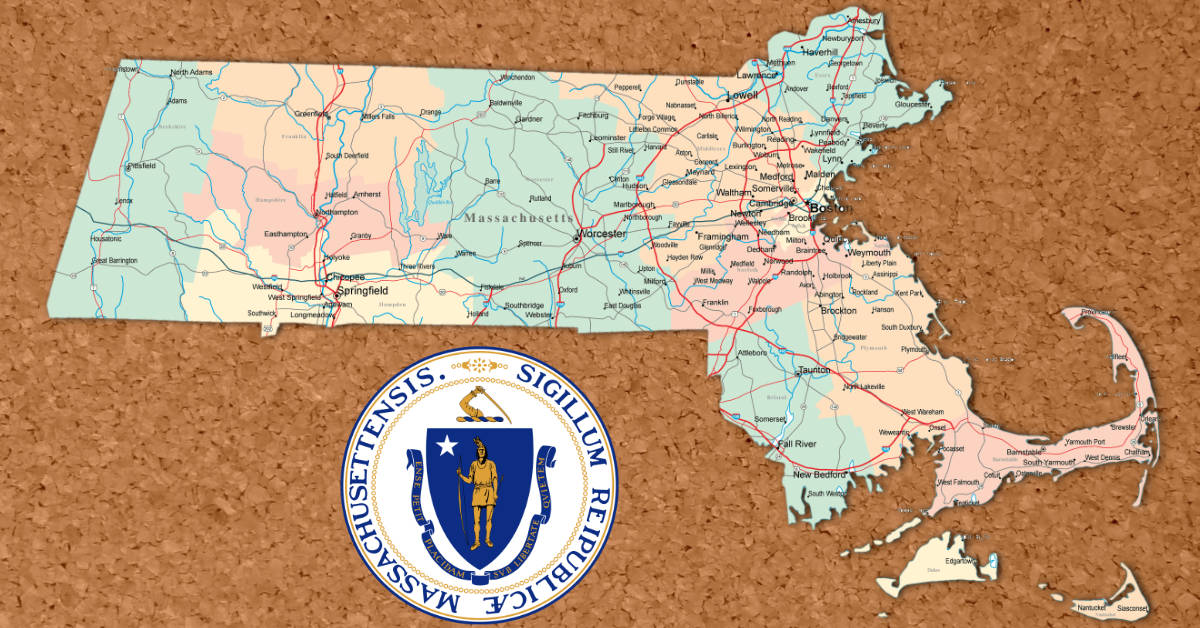
Five Fun Facts About Massachusetts Entering the Union
- The Constitution was ratified in the Old State House. Every year on July 4th, at 10am the Constitution is read from the balcony.
- The Massachusetts Constitution was adopted in 1780.
- John Hancock was elected as the first governor on October 25th, 1780 and was the sitting governor when Massachusetts ratified the Constitution.
- Population in Massachusetts was 378,787 in 1790 (The first census)
- Boston was the third largest city in America - New York was number one and Philadelphia was number 2. Today Greater Boston is the 21st largest city in America.
Massachusetts Compromise
Today is also when the Bill of Rights became a requirement of the United States Constitution.
Many people may not know that Massachusetts didn't easily adopt the Constitution. Anti-Federalists felt that the Constitution didn't give many individual rights. It took a lot of convincing by notable Federalists John Hancock and Samuel Adams to get the members of the Massachusetts Constitutional Convention to accept the United States Constitution.
The Massachusetts Compromise was to amend the Constitution with the "Bill of Rights." A set of rights that ensured that the Constitution didn't give powers to the elite and remove the individual ideas that so many people fought for.
The compromise help ratify the Constitution on this day in 1788 by a vote of 187 to 168.
Five other States soon passed the Constitution with four of them using the Massachusetts model of recommending amendments along with the ratification.
The Constitution was officially ratified on June 21st, 1788. George Washington inauguration was on April 30, 1789.
PermalinkA. Philip Randolph Statue
Interesting information about the large status in the Back Bay station
In the Back Bay Station, near the ticket counter, is a larger than life-size statue of A. Philip Randolph.
Brief Background About A. Philip Randolph
Asa Philip Randolph (April 15, 1889 - May 16, 1979) was a civil rights organizer. In 1925, he organized several Harlem railroad sleeping car porters into the Brotherhood of Sleeping Car Porters. It became the first black union to be recognized by the American Federation of Labor.
He directed several marches on Washington, including the famous 1963 march with Martin Luther King Jr where he delivers the famous "I Have a dream speech."
You can learn a lot more about A. Philip Randolph life on the A. Philip Randolph Institute Website. There is also a short video of A. Philip Randolph on YouTube.
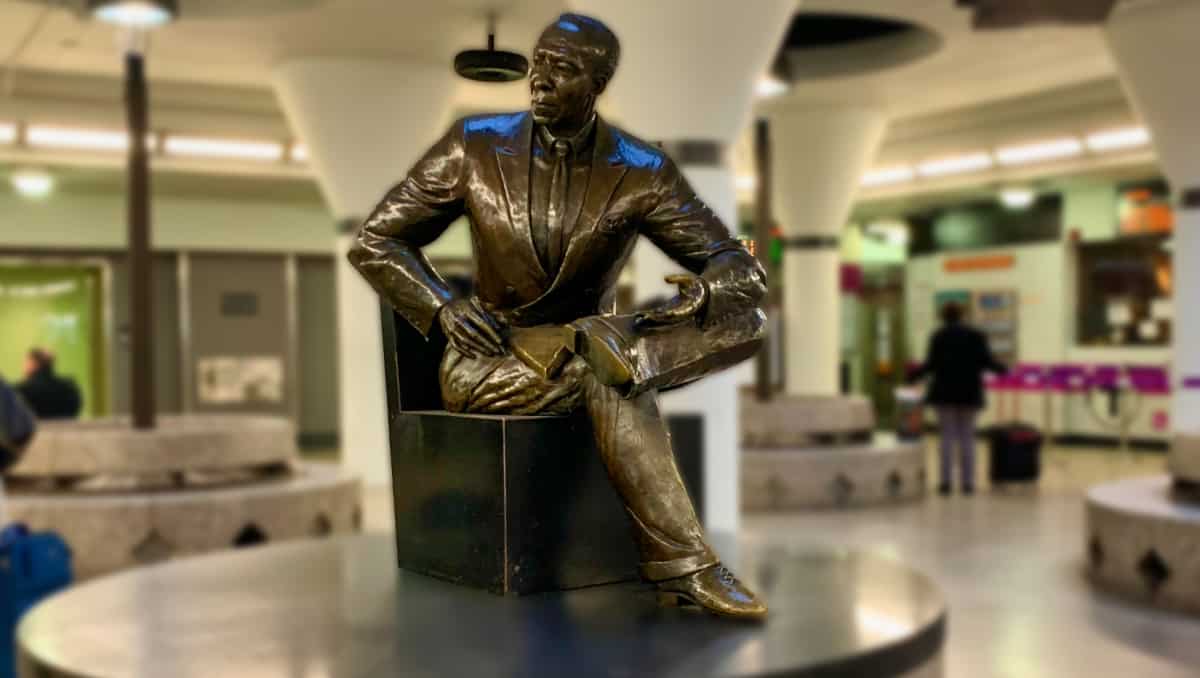
Fun Facts about the Statue
Here are some fun facts that I found about this statue:
Statue was Commissioned in 1986.
Statue was unveiled on Saturday, October 8, 1988 - as part of the redesign of the Back Bay station. In attendance was Transportation Secretary Frederick P. Salvucci, James F O'Leary general manager of the MBTA, Norman Hill president of the A. Philip Randolph Institute, Richard Womack director of the civil rights program of the AFL-CIO. Also present was John Dukakis the governor's son. At least 400 people were at the ceremony.
23 retired members of the Brotherhood of Sleeping Car Porters were also in attendance.
Governor Michael Dukakis wasn't able to attend the ceremony as he was running for President of the United States.
In October 1987, Governor Michael Dukakis dedicated a station on the Orange Line to A. Philip Randolph.
Back Bay station was select for the statue because many of the early members of the Brotherhood of Sleeping Car Porters settled in the area.
The entire waiting area is named after A. Philip Randolph. The purpose is to turn the space from a waiting room into an education room.
The statue was done by Tina Allen. This was her first project. You can see her signature on the pants fold on the shoe that is touching the ground.
Text at the Base of the Statue
At the base of the statue is the following text, this is a bit hard to read since over the years, people have been sitting on the words.
Salvation for a race, nation, or class must come from within. Freedom is never granted; it is won. Justice is never given; it is exacted. Freedom and justice must be struggled for by the oppressed of all lands and races, and the struggle must be continuous, for freedom is never a final fact, but a continuing evolving process to higher and higher levels of human, social, economic, political and religious relationships.
Tina Allen Signature on the Statue
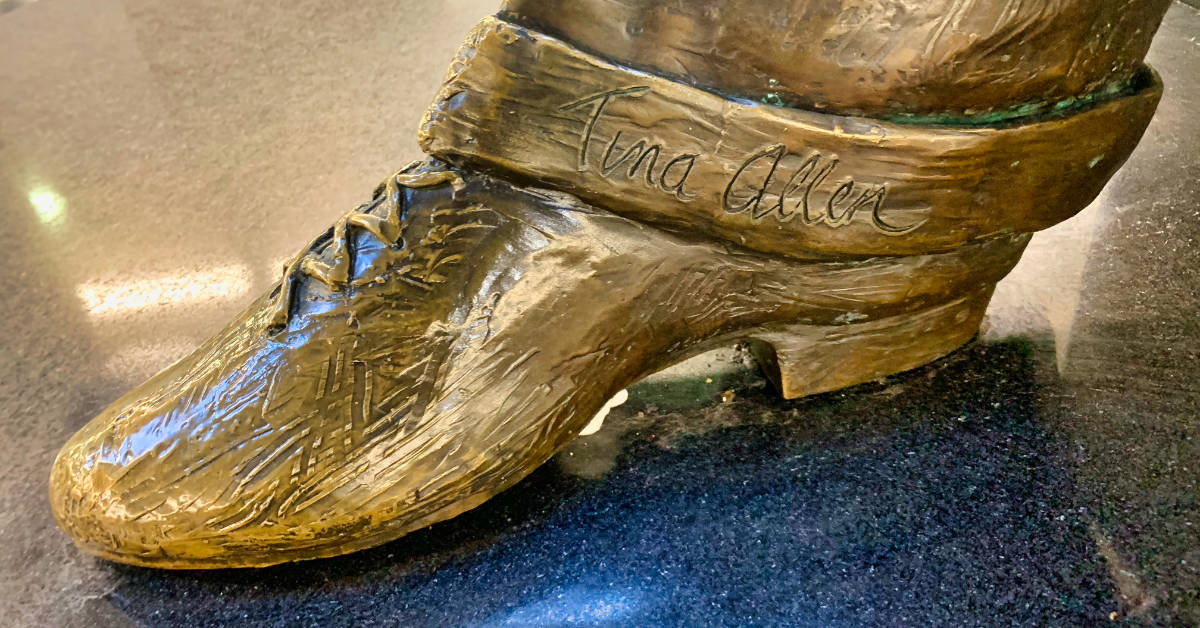
Henry Bradford Endicott tablet
Learn about the Henry Bradford Endicott tablet in the Massachusetts State House
At the Massachusetts State House, near the Executive Wing, is a commemorative plaque for Henry Bradford Endicott.
Henry B. Endicott was an entrepreneur that came from a poor family and built an empire to be one of the richest men in the world. He built his wealth through the Endicott Johnson Corporation - a shoe manufacturer.
Henry B. Endicott gave back to the community:
- He donated shoes from the Endicott Johnson Corporation to those in need
- He arranged a relief train to provide needed assistance to those impacted by the Halifax Explosion.
- He was appointed as a food administrator and the executive manager of the Massachusetts Committee on Public Safety during World War I.
You can learn a lot more about Henry Bradford Endicott in the book about him, Henry B. Endicott: A Brief Memoir of His Life and His Services to the State and Nation which is in the public domain.
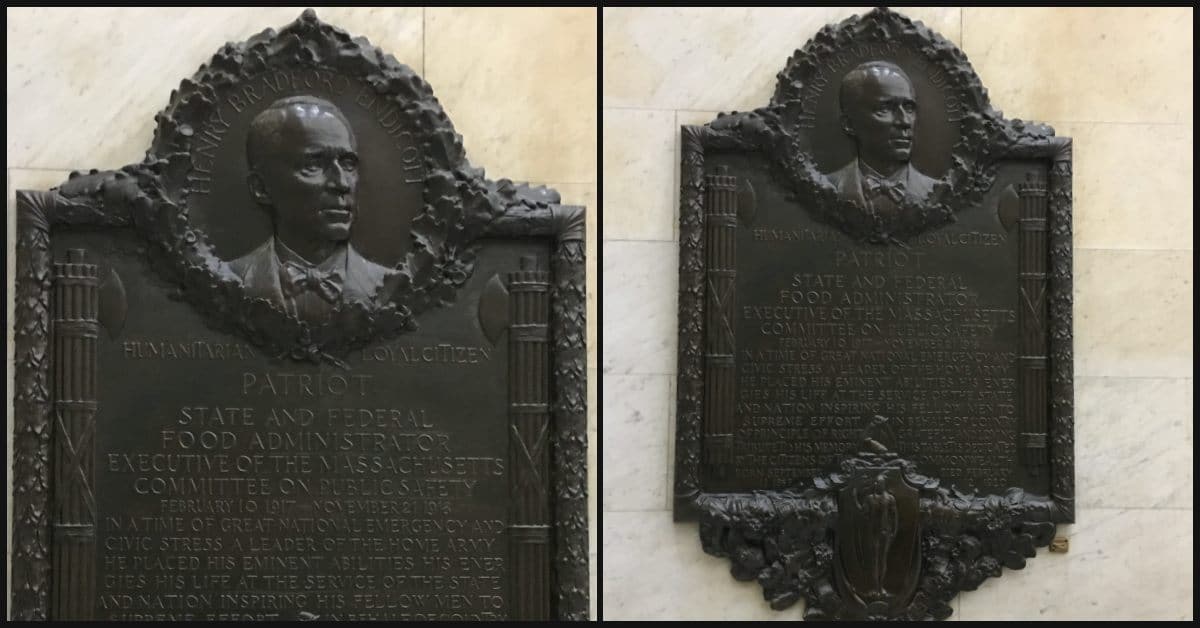
Six Fun Facts About the Plaque
Here some interesting things that I learned about this plaque:
This tablet was made by the T. F. McGann & Sons Founders, Boston Massachusetts. They also did the Marvin Goody Memorial in the Boston Public Gardens and the "Winged Victory" statue at the Boston's World War 2 Memorial to name a few of the local work. (T.F. McGann signature is on the bottom right on the plaque.)
Henry Hudson Kitson was the tablet sculptor - you can see the signature on the left side.
The tablet was unveiled by Massachusetts Governor Channing H. Cox on December 15, 1921 - 672 days after Henry B. Endicott died.
The Governor said at the ceremony, "It is then high privilege to accept on behalf of the Commonwealth this beautiful memorial tablet, authorized by law and made possible by devoted friends and coworkers-his fellow-citizens. It records a great service nobly rendered. It deserves its place on the walls of this historic hall."
In 1920, the Massachusetts Legislature pass an act to appropriate $400 for a memorial in the State House. ($5,189.58 in 2019) An additional $2,500 was raised by 53 private citizens.
The bronze tablet is 69" by 41" by 3"
Text of the Plaque
Henry Bradford Endicott
Humanitarian Loyal Citizen
Patriot
State and Federal
Food Administrator
Executive of the Massachusetts
Committee on Public Safety
February 10, 1917 - November 21, 1915
IN A TIME OF GREAT NATIONAL EMERGENCY AND CIVIC STRESS A LEADER OF THE HOME ARMY HE PLACED HIS EMINENT ABILITIES HIS ENERGIES HIS LIFE AT THE SERVICE OF THE STAT AND NATION INSPIRING HIS FELLOW MEN TO SUPREME EFFORT IN BEHALF OF COUNTRY OF PRINCIPLE OF RIGHT IN GRATEFUL AND LOVING TRIBUTE TO HIS MEMORY THIS TABLET IS DEDICATED BY THE CITIZENS OF THE COMMONWEALTH.
Born September 11, 1857 Died February 12, 1920.
Jean Louis Lefebvre De Cheverus
Jean Louis Lefebvre De Cheverus homestead tablet
Jean Louis Lefebvre De Cheverus was the first Bishop of Boston. He was Bishop from 1810 until 1823.
On the building at 110 Frankin Street is a tablet where his home was in the early 1800s.
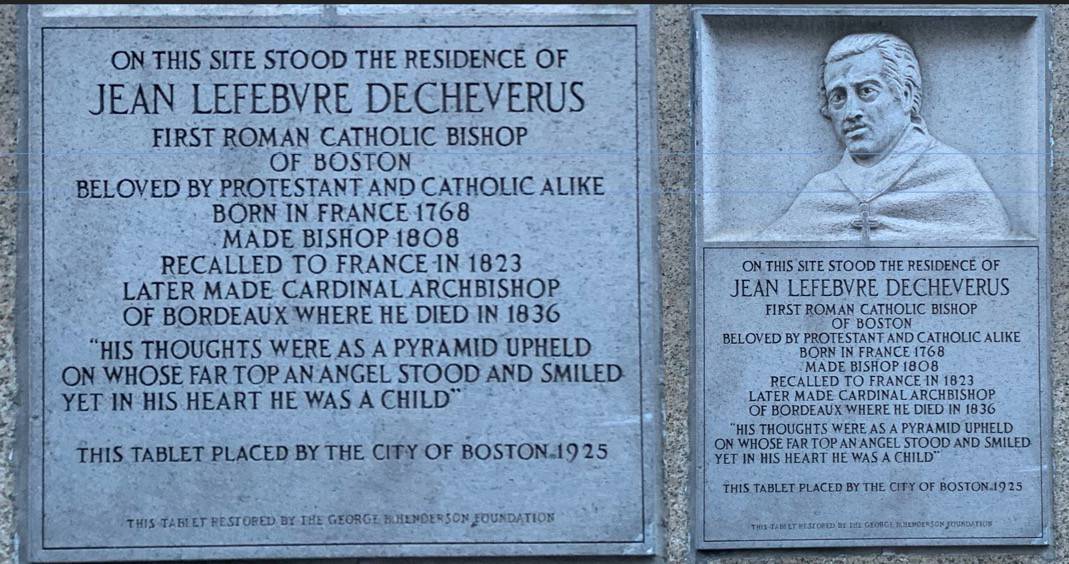
Tablet Text
Text On the TabletOn this site stood the residence of Jean Lefebvre DeCheverus First Roman Catholic Bishop of Boston Beloved by Protestant and Catholic AlikeBorn in France 1768 Made Bishop 1808 Recelled to France in 1823 Later made Cardinal Archbishop of Bordeaux where he died in 1836 "His thoughts were as a pyramid upheld on whose far top anget stood and smiled yet in his heart he was a child" This tablet places by the city of Boston 1925 This tablet restored by the George M. Henderson Foundation
Five Fun Facts
Interesting facts about Jean Louis Lefebvre De Cheverus
Born on January 28, 1768 in Meyaeene, France,
Exiled to England during the French Revolution and soon came to America in 1796 to do some missionary work.
He spent much of the time in Maine with Penobscot Indians (He managed to speak their language.)
In August 8, 1810, Pop Plus VII made Jean Louse Cheverus first bishop of Boston. (Official documents didn't arrive until November 1, 1810)
He was loved by everyone in New England, people would come from all over to listen to him speak.
He was a friend to President John Adams and a frequent advisor to the Massachusetts Legislature.
On September 26, 1823, he returned to France on a promise to his family. King Louis XVIII requested him to return because of Jean Louse Cheverus poor health.
Before leaving Boston, he donated all his possessions including several books that help start the Boston Athenaeum. (You can still see the collection today!)
While in France he became the Archbishop of Bordeau.
He died on July 19, 1836 in Bordeaux, France
PermalinkBoston Landmark Map
Find the Important Locations in Boston
Boston is a great historic city. It's known as the "birthplace of the American Revolution" because many historic events took place here.
There are hundreds of historical sites of the American Revolution for visitors to explore.
You can find all the "Official Historical Sites" on the Boston Landmark Commission Map.

This is a useful map to see all the important places to check out. Simply click on an object and get more information about that location.
You may notice that many "popular" spots are missing from this map, such as Paul Revere House, Old North Church, etc. Many of those sites were protected before the Boston Landmark Commission existed.Boston Landmark Commission
Since 1977, The Boston Landmark Commission job is to help preserve important buildings and locations around the city. Its role is not just limited to century-old architecture but all historic structures.
You can get the download the status of petitions from the City of Boston.
Getting listed by the Boston Landmark Commission is an honor. This is their explanation of the difference between the National Register and the Boston Landmark Commission Landmarks:Listings on the National Register of Historic Places is an honorary designation by the federal government. The listing recognizes the site is historically significant at the local, state, or national level. Projects involving federal or state funding are reviewed, but there is no protection against demolition.
Designated Boston Landmarks, including buildings in Historic Districts, have a higher level of protection. Commissioners must review and approve any changes. They base their decisions on guidelines developed through a public process.
Elephant Memorial at Fenway Park
Largest Crowd at Fenway Park
Long before crowdsourcing became a thing - In 1914, the children of Boston help raise enough money to place three Elephants at the Franklin Park Zoo.
There is a marker at Fenway Park to remember the occasion when the Elephants first met the children of Boston. It was the largest gathering at Fenway Park. (Due to current fire rules - this looks to stand forever.)
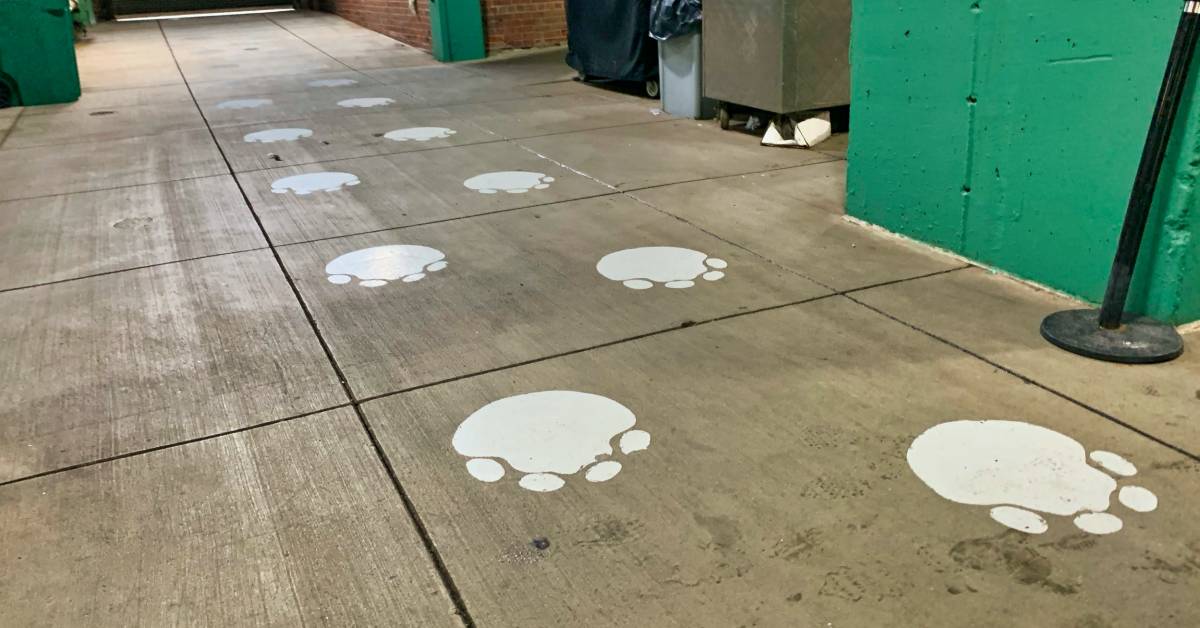
Elephant Prints on the Ground in the Grandstand area
Things I Learned
- Boston Post's publisher Edwin A. Grozier came up with the idea of having children collect money for the city to buy the elephants.
- Only nickel and pennies were accepted in boxes that were put in stores all around the city.
- The city raised: $6,000. ($151,948.45 in 2018) If they were all pennies it would be weigh 38 lbs.
- 70,000 Children and Parents attended the event on June 6, 1914 - the gates were to open at 9am, but such a large crowd gathered that they opened it up early.
- The elephants spent the night at the park before they came out on the field.
- In 1914, the Average Baseball attendance at Fenway Park was 6,055!
History Fun Facts
- Babe Ruth would joined the Red Sox a month later - July 11, 1914
- Largest crowd for a Baseball game at Fenway Park was 49,000 on September 23, 1935.
- Largest Concert crowd for a Paul McCartney concert was 36,064 on July 10, 2013.
Remembering the Elephants
- Mollie died on April 22, 1921 of a heart attack- Harvard's Natural Museum has the skeleton. (Some media outlets called her Molly)
- Tony died on January 19, 1939 of cancer
- Waddy died November 5, 1940 - one of the longest elephants to live in captivity.
Sign at the Park
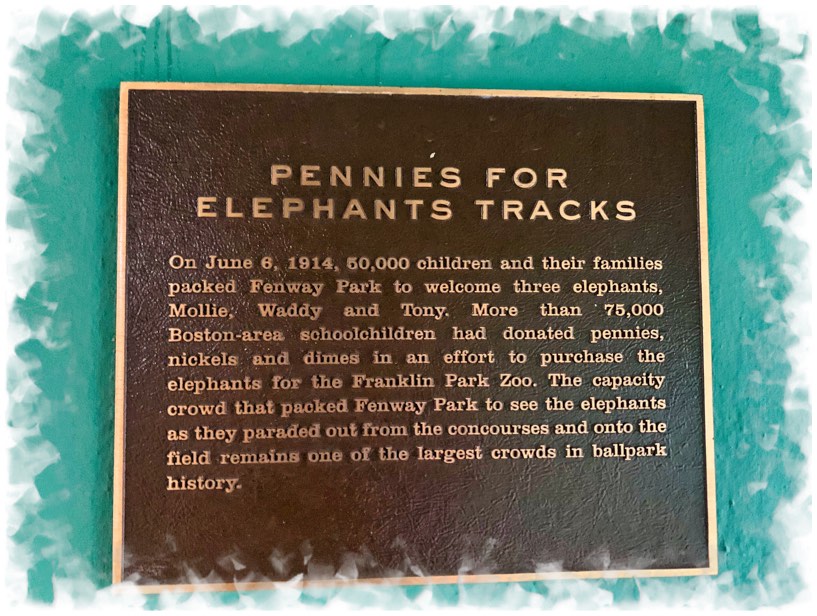
Best Boston Blog Post of 2019
Great Boston Posts of 2019
There were a lot of great Boston blog posts in 2019. It was really hard to find the ones that stood out more than others.
After reviewing all the posts, I was able to identify the posts that made a big impact on readers this year. Nine Outstanding Posts in 2019
- Archbald Gravestone - Good Information on a Family gravestone in the Granary Burial Grounds
- Paul Revere House - Information on one of Boston???s most popular tourist attraction.
- George Washington Bust - Fun Facts on the best facial of George Washington.
- The Founders Memorial - Information on a little know memorial in the Boston Public Commons.
- Pope John Paul II visits Boston - Learn how the monument in the Boston Public Commons came about.
- Christopher Snider - Learn about a 12-year old boy that died days before the Boston Massacre.
- Mather Tomb - A tomb in the Copp???s Hill Burying Ground that some say haunts the grounds.
- OneIda Football Club Monument - Read how early Football was once played in the Boston Public Commons.
- Vendome Hotel Fire Monument - Learn more about the great Vendome Hotel File that occured on June 17th, 1972.
Goals for 2019
The tradition continues in 2020 - Every Thursday expect to see another exciting Boston post.
I will focus on better photos, unique stories and focus more post in 2020 to visitors to Boston.
If you have any post that you would like to see, let me know in the comments below.
PermalinkPrudental Garage Parking
Finding Your Way around the Big Garage
This is a wonderful time of the year to be in Boston at night. Granted that it is cold, but you should miss all the bright lights around the city.
There are plenty of places to park in Boston, one of the largest parking garages in Boston is at the Prudential Mall.
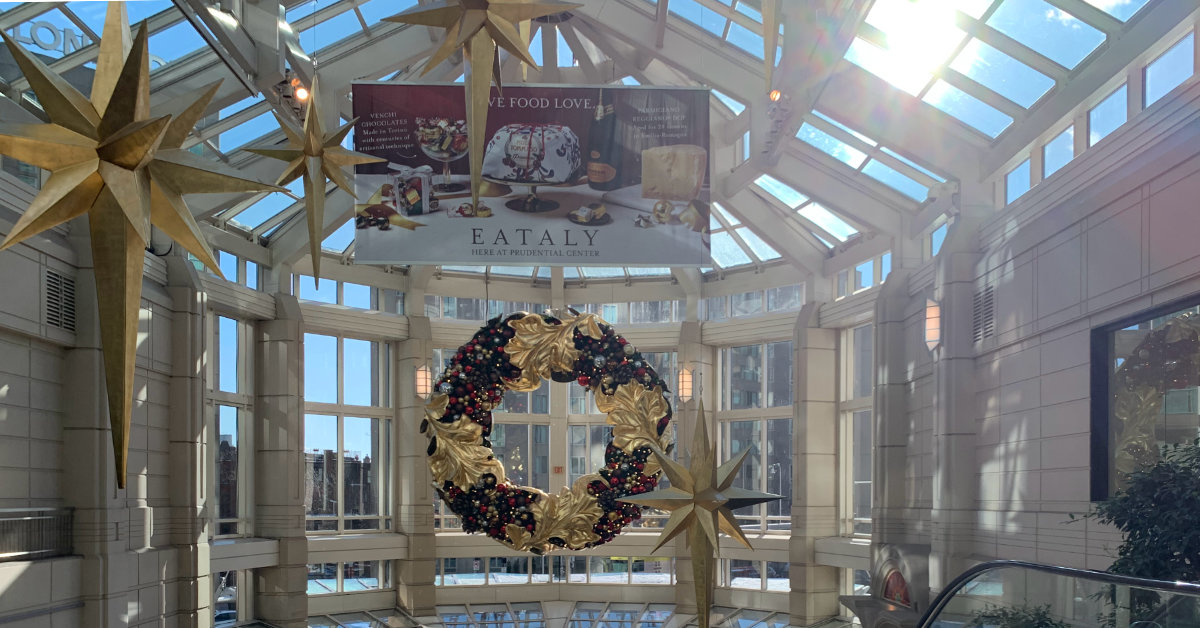
Parking Cost Weekdays
0 to 1 Hour $12.00
1 to 1.5 Hours $20.00
1.5 to 2 Hours $30.00
2 to 24 Hours $42.00
Parking Cost Weeknights
Enter after 5:00PM and exit by 3:00AM
$15.00 flat fee with validated parking ticket.
You can validate your parking ticket at any venue in the Prudential Mall. (You do need to spend at least $10) Dunkin Donuts is included - which is perfect for the ride home!
Tips with Parking at the Pru
Pay attention to where you enter the Mall - there are many elevators/escalators that will get you up in the Mall.
The garage can be confusing if you go back in using a different elevator. (You may end up like the classic Seinfeld episode where they get lost in the Garage.)
Some Mall Entrances are in stores that may close early. Make sure to read signs that let you know when that entrance is closed.
Most of the first floor of the garage is reserved for monthly parking holders. When you enter the garage just go to the second floor.
The best entrance into the garage is off of Huntington Ave.
To get back on the MassPike, use the Dalton Street Exit, take a left on Boylston Street and then a right on Massachusetts Ave. Then stay in the left lane for the Mass Pike Entrance - West Bound.
PermalinkWilliam Channing House
Fun Facts about the house on Mount Vernon Street
Last year I wrote about the William Ellery Channing statue at the corner of Arlington Street and Boylston Street.
William Ellery Channing lived not too far from the Arlington Street Church where he was a well-respected speaker. His house was located on Beacon Hill - 83 Mount Vernon Street - about a 15-min walk to the Church.
There is a small marker to let people know about the previous owner.
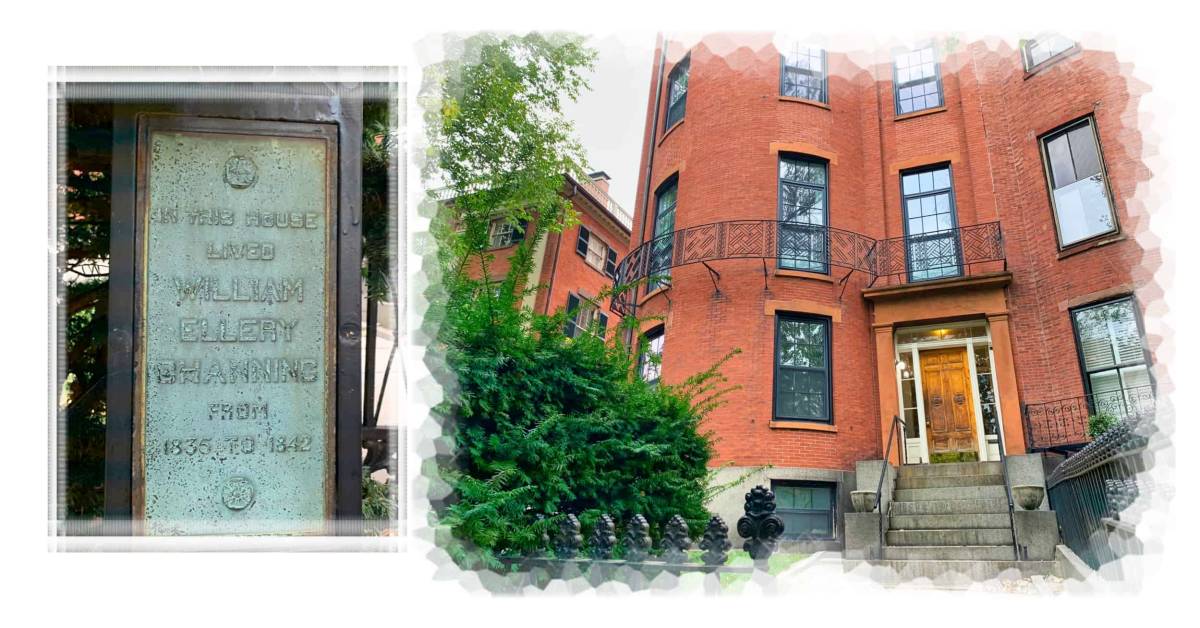
Six Things I learned about this house
- This is private residence no tours are offered at this location. There are 6 apartments at this address.
- The building was last sold on June 15, 2018 for $8,550,000 or $913 per square foot. It has 6-bedrroms and 6-baths.
- It was converted to a multi-unit family house in 1984.
- The house was built in 1834 and, as the sign indicates, he lived here from 1835 to 1842. (This means he was the first owner of the property.)
- He wrote the book Slavery while living at this location.
- Mr. Channing would often take walks with his neighbors around the Boston Commons and talked about various Unitarian views. Sometimes the conversation would end up in his sermons at the Arlington Street Church.
About
There are many interesting things and places around Boston, MA that you should know about. Here are a few that caught my attention. From historical sites such as the USS Constitution Museum, the Freedom Trail, and the iconic Fenway Park, to modern attractions like the New England Aquarium, the Boston Public Market, and the Isabella Stewart Gardner Museum, there is something for everyone. Whether you are looking for a fun family trip or a romantic getaway, Boston has it all.
Check out all the blog posts.
Blog Schedule
| Sunday 6 | Misc |
| Monday 7 | Media |
| Tuesday 8 | QA |
| Wednesday 9 | Pytest |
| Thursday 10 | PlayWright |
| Friday 11 | Macintosh |
| Saturday 12 | Internet Tools |
Other Posts
- Wall of Literary Awards
- Samuel Adams Gravestone
- Caryatids
- House of Blues
- Prudential Skywalk Observatory
- Boston Bricks
- Rachel Revere Park
- The Christian Science Plaza
- Map of Back Bay at the Back Bay MBTA Station
- Bartholomew Gedney
- Encore Boston Harbor
- State House Great Hall Clock
- Jean Louis Lefebvre De Cheverus
- Zakim Bridge
- Boston Chinatown Gate